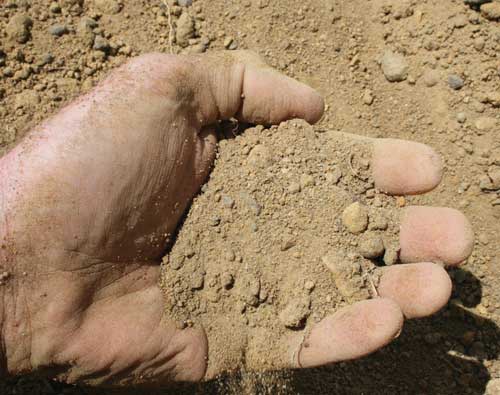December 1, 2010

South of U.S. Interstate 20, agricultural producers were experiencing either abnormally dry weather or in a moderate drought, with pockets of severe drought, according to the U.S. Drought Monitor.
Although the dry weather promoted the finishing of cotton harvesting in many areas, reports from Texas AgriLife Extension Service county agents detailed the stress on other agricultural sectors. The agents reported dried out topsoils, stressed pastures and rangeland, dropping stock-tank levels and the implementation of burn bans.
"With the dry weather, abundance of forages from earlier rains and the recent winds, wildfires are a threat to landowners," said Ryan Martin, AgriLife Extension agent for Motley County, which lies about 50 miles northeast of Lubbock.
Martin said one Motley County rancher had a fire last week that burned 200 acres before he knew it.
"Little has changed during the Thanksgiving break," said John R. Senter, AgriLife Extension agent for Mitchell County, Colorado City. "Cattle producers are facing virtually no grazing at a time when cattle should be on wheat and making rapid gains. No grazing is taking place in 95 percent of wheat fields due to very poor performance of wheat. Rainfall is now at the critical stage to offer some relief for cattlemen."
"The county is extremely dry," said Norman Fryar, AgriLife Extension agent for Pecos County, Fort Stockton. "Relative humidity is low with high winds. These conditions will promote growth and spread of any wildfires that start."
"Recent showers have provided surviving winter forages with some much-needed rainfall," said Aaron Low, AgriLife Extension agent for Cherokee County, south of Tyler. "Stock ponds and creeks continue to go dry causing some producers to liquidate herds."
"Very cold nights last week, but temperatures rose above freezing quickly," said Russell Kott, AgriLife Extension agent for Kimble County, northwest of San Antonio. "It's continued to be dry and windy. There's not much hope for winter wheat unless it starts raining."
"Water quantity was declining fast," said Larry Perez, AgriLife Extension agent for Jim Hogg County, about 100 miles south of San Antonio. "There was no precipitation this past week. Most stock tanks in Jim Hogg County that depend on rainfall for recharge are very low."
You May Also Like




